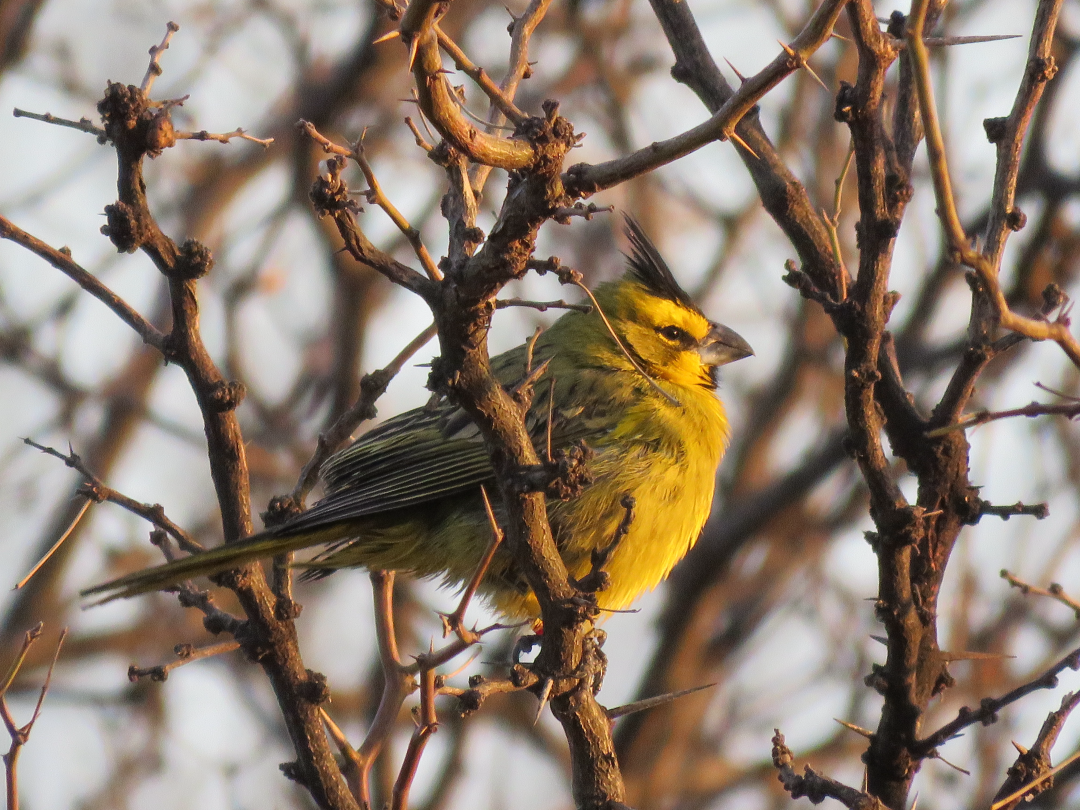Disclaimer:
Please be aware that the content herein is comprised of personal reflections, observations, and insights from our contributors. It is not necessarily exhaustive or authoritative, but rather reflects individual perspectives. While we aim for accuracy, we cannot guarantee the completeness or up-to-date nature of the content.
Type of project
Contributory project: It is designed by members of the scientific community, and citizens participate in data collection.
Collaborative project: Citizens participate in data collection and analysis.
Co-created project: Citizens participate in all stages of the scientific process.
Overall goal
Record and geolocate sites where the yellow cardinal (Gubernatrix cristata) appears to identify populations and determine its viability (according to the abundance of individuals in each population) and isolation/connectivity (according to the continuity/discontinuity of records).
Update the information of sites where remaining populations of yellow cardinals appear (search at historical sites and with current presence of the species).
Raise public awareness of the conservation issues affecting the species.
Specific goals
Assess the viability and connectivity1 among the populations of the species.
Recommend release sites for yellow cardinals rescued from illegal wildlife trafficking based on updated information on populations.
Identify priority areas for the yellow cardinal’s conservation.
Raise public awareness of conservation issues affecting the species through community participatory activities.
Promote local groups working on the conservation of the species.
Description of citizen participation
After the recruitment of census takers posted on the Aves Argentinas’s social media, sites of interest are shared to survey the presence of cardinals. Additionally, citizens suggest sites in their residential regions. Before carrying out a census, census takers receive training in search methodology and useful information. The census compiles information about geolocations, the number of individuals, and, if possible, the sex and maturity stage (adult/juvenile) of recorded cardinals. As an optional activity, citizens are asked to send photos of or data about the environment at observation sites. Data is recorded in spreadsheets that are sent in digital format or through a mobile application that was specifically designed at UBA for yellow cardinal censuses.
Time Frame
4/1/2014 - N/A.
Project leaders
Marisol Domínguez, University of Potsdam
Bettina Mahler, School of Exact and Natural Sciences (FCEN)/Universidad of Buenos Aires (UBA)
Rocío Lapido, Office of Conservation, Aves Argentinas
Contact information
Email: [REDACTED_EMAIL]; [REDACTED_EMAIL], [REDACTED_EMAIL]
Web: www.avesargentinas.org.ar
Facebook: facebook.com/avesargentinasAOP
Twitter: twitter.com/AvesArgentinas
Twitter: twitter.com/CienciaAves (Departamento Científico [Scientific Department])
Instagram: instagram.com/avesargentinas
YouTube: youtube.com/user/AvesArgentinasAOP
SDGs
 Consent to share form or official link.
Consent to share form or official link.

 15Life on land
15Life on land
Comments
Log in to add a comment or reply.